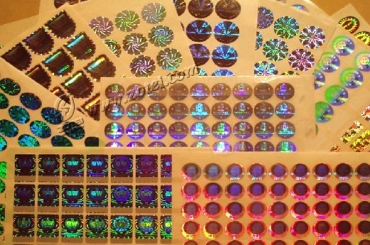If you manufacture a wonderful product, people will want to have it. And if they can’t have it, they might like something that’s almost like it, but not quite. They might consider buying a counterfeit version of your product.
It is entirely possible that they could buy a fake of your product without knowing. However, counterfeits don’t usually shadow the original prices, they are often suspiciously cheap – so alarm bells should start ringing.
We are not here to debate the rights and wrongs of counterfeiting (it’s wrong, by the way), but to find ways of preventing it happening in the first place.
Be Pro-active
It is down to the manufacturer and seller to be vigilant about where the products are placed on sale. Know about prices and specifications of all products you are stocking in all the territories you trade so that anomalies will leap out at you. Be pro-active about regularly checking on products in your line, making sure they are the real deal, not having been usurped by upstart fakes.
Be certain to register trademarks in all the international territories you manufacture and sell in. Without a registered trademark, you have nothing to defend in a court of law.
It’s not just about Handbags
Some people may consider counterfeiting to be a victimless crime but that is far from the truth. The black market in fake pharmaceuticals has reached epidemic proportions and there have been some well publicised deaths caused by unsuspecting individuals dosing up on fake medicines. Counterfeit operatives are only looking to turn a quick profit and the ingredients (and safety) of the pharmaceuticals they sell is the least of their concerns – hence the tragedies that have occurred.
The other people who suffer at the hands of counterfeit criminals are the businesses themselves. Fake, inferior products on the market, claiming to be the real thing, reflect poorly on the brand and image of legitimate products. Sales may suddenly become inexplicably slow, and on investigation you find some poor quality fakes have flooded the market, slashing demand and ultimately spreading dissatisfaction with your brand. Not good for business.
Futuristic Solutions
As with just about anything these days, the answer lies in technological innovations. With massive revenues in the billions being lost annually due to the corrupt and invidious culture of counterfeiting, it’s good to know help is on the way. The challenge of combating the counterfeiters has been enthusiastically taken up by the tech industries. Businesses now have the option to use hologram sticker printers to give their products a distinctive, fingerprint to keep them secure. Hologram sticker printers produce two and three dimensional, easy to apply stickers bearing a holographic image. Holograms, by definition diffractive, multi-layered and complex, are impossible to duplicate, copy or scan into printed medium. Another benefit of hologram labels is that they are tamper-proof, once an attempt is made to peel it off, it simply self-destructs.
Other preventive measures against faking it on a grand scale include code. The traditional one dimensional bar code on packaging with its reliance on a series or marks corresponding with a series of numbers, we are all familiar with. But more recently a few others have joined the party. Two dimensional codes that work in conjunction with websites and smart phones are able to give instant verification of goods. Being able to scan thousands of characters in quick time means it has multiple applications. Such scanning technology is able to track where certain products should be in the logistics chain at a given time – if something turns up where it shouldn’t be, the fake alarm bells will start to ring.
Radio Frequency Identification (RFID) is a growing technology used in commercial tracking. Using electromagnetic fields to transfer data from a scanner to product, RFID has the benefit of being able to work over larger distances than bar code scanners. Tags can be embedded in products and they can be tracked – and monitored for tampering etc.
It’s all new technology, but there are encouraging results filtering through on the fight against counterfeits. In the coming months we will be hearing more of data glyphs (super advanced mini bar coding) and even DNA authentication which fights counterfeit packaging. There’s an awful lot coming down the pipe and those counterfeiting con artists should be feeling suitably nervous about disruption to the flow of their fraudulent income stream…

